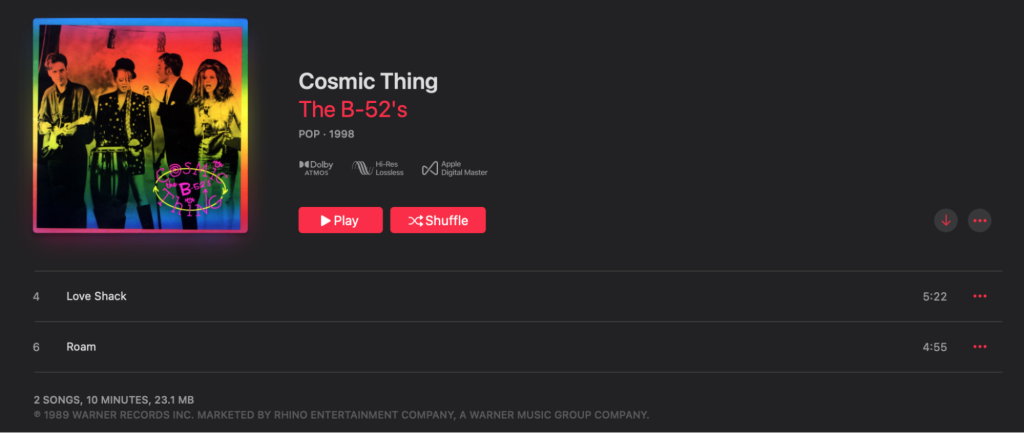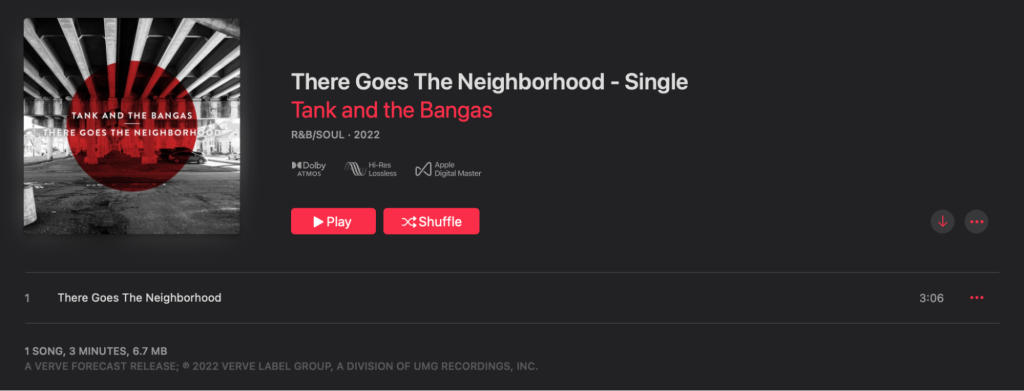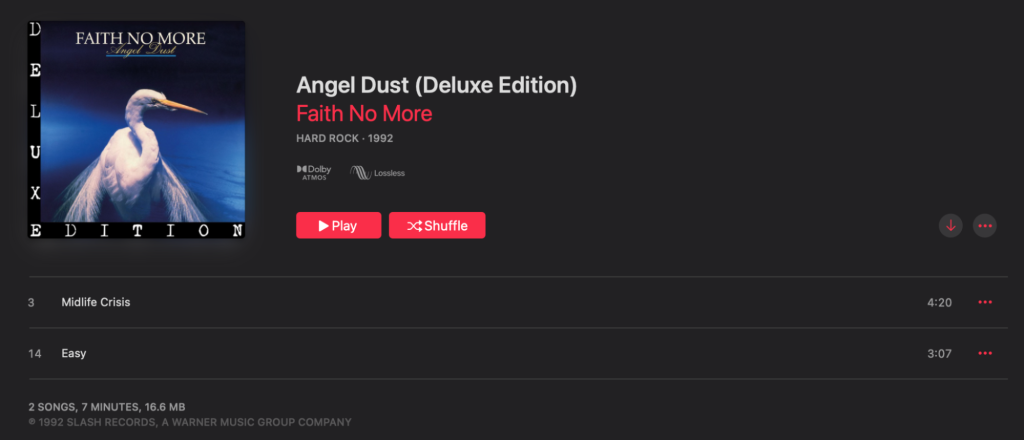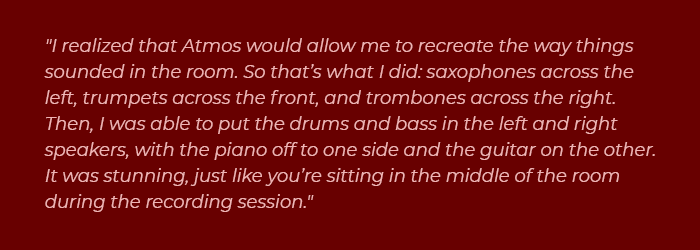Will Kennedy and Matt Wallace are no strangers to the music business, having produced and mixed for acclaimed acts such as Maroon 5, Faith No More, U2, OneRepublic, and Sheryl Crow over a nearly 20-year career. They’ve only recently embraced immersive audio, with their custom-built Studio Delux Immersive facility equipped for playback in Dolby Atmos and Sony 360 Reality Audio.
I had the chance to chat with Will and Matt about their Atmos mixing philosophy, what immersive projects they’re currently working on, as well as where they think the industry is headed.
How did you both become aware of the Dolby Atmos format? Was it difficult to modify your studio with the necessary equipment?
Matt: Yeah, that's a good question. Both of us blame the other guy for coming up with the Atmos idea. [laughs]
I was first exposed to it two or three years ago. I went to the Dolby Theater and loved how it sounded in their big room, but I had concerns about its ability to fold down to a consumer-sized system. Around nine to ten months ago, we decided to upgrade our room. It sounds just fantastic in the room, though the headphone delivery leaves a bit to be desired. Will's really the technical guy, he came up with all the calculations for the room. I did more of the handyman stuff, building the framework for each speaker.
We’ve been working together on-and-off for about 14 years now, with Will being the primary engineer on some early stereo projects. We kind of went our separate ways for a while, and now things have come full circle with the new focus on Atmos and immersive.
Will: Matt and I were having a number of discussions over the last few years about how Atmos looked like it was taking the same downward trajectory as 5.1, and we didn't really understand why we were attempting this again. Eventually, we came to the conclusion that there was an opportunity to do something different and we ended up diving in. About a year ago, we started putting things together and bringing the studio up to spec.
Matt: We kind of fell into it to be honest, because I don’t think either of us had a real plan for how to pull this together. Our friend Brad Wood was really encouraging. We had gone to his room to listen before we started building ours. We didn’t want to spend the kind of money that he and other guys are putting forward for the upgrade, so we came up with the idea of using Kali speakers which saved us quite a bit of money without losing any sonic capability. So we kind of just stumbled into it, and we’ve been getting quite a bit of work since.
Can you list offhand which albums and/or singles you’ve remixed in Atmos? It’s unfortunate that Apple Music doesn’t offer production credits on their Spatial Audio content, but I know from other interviews that you’ve done Faith No More’s “Epic” and The B-52s’ “Love Shack” among others.
Matt: For The B-52s, we did both “Love Shack” and “Roam.” For Faith No More, there’s “Midlife Crisis,” “Easy,” and “Epic.” If your readers liked the Atmos mix, it’s probably one of ours. If they didn’t, it was Andrew Scheps. [laughs]

We also did a Tank and the Bangas single (she’s an incredible singer) and Ronnie James Dio’s “Holy Diver,” but it’s not out yet.
Will: There’s also a few Kid Rock songs and a Daniel Powter track. I know I’m missing some other stuff.
Right now, we’re working on a few songs from a band called I Prevail. Their music is perfect for Atmos. There’s so many layers that it’s nearly impossible to make it work in stereo. Because there’s so much going on at once, you can actually hear these things separately all around you. I think Atmos is built for people who have imaginations beyond stereo. They have bigger ideas they want to put forth they’ve kind of been shoehorning into a stereo picture to poor effect. These guys like I Prevail and Ice Nine Kills – and another one that hasn’t come out yet – have these amazing visions, and it’s really inspiring to be able to actually accommodate them.
Years ago, long before Atmos, I was engineering and Matt was producing a band called Eye Alaska. They had this huge grandiose vision for their record, with heavy guitars and strings. I had to keep telling them we only had two speakers, and you simply can’t hear all ten things at once. When we were mixing it, one of the guys said something like, “Wouldn’t it be great if you could have speakers all around you and we could just have a different instrument coming out of each one?” I think about that all time now, because Atmos would have been perfect for that record.
Matt: Yeah, the entire thing was kind of the brainchild of the singer. He came to us with a 140-track GarageBand session, and we recorded a rock band on top of it! He had keyboards, strings, synthesizers, bells, percussion, everything. There’s no way in hell you could hear all that stuff in stereo, but it’d be perfect for Atmos.

It’s a shame that record came out in a sort of “dark age” for surround music. The bigger labels’ support for 5.1 had mostly died off around 2007/8, and Atmos had yet to emerge.
Will: It was on an independent label too. Even if there was interest in trying it, I doubt they had the budget for a 5.1 mix.
Matt: It was on Fearless [Records], right? We’re actually working on some Atmos projects with them now.
In terms of the Atmos mixing work you’re getting now, would you say it’s primarily newer material or remixes of classic back-catalog titles?
Will: I think it’s almost a 50/50 split, where we’re getting both new and old stuff. We’ve got another new project coming up for Concord in the next few weeks. So yeah, it seems to be equal.
Is most of the work, particularly the back-catalog stuff, coming from one particular label? Universal seems particularly eager to reissue their classic titles in Atmos.
Will: Depending on who you ask about that, you’d probably get a different answer. We’ve been getting a lot from Warner Music Group, but that has more to do with where we’ve developed relationships over the years. As you said, Universal is doing a ton of this as is Sony. In fact they have their own immersive format out there. Our friend Brad [Wood] is doing a lot for Universal. So, I wouldn’t say that one label is comissiong more work than the rest, they’re all heavily invested in this.

If possible, can you explain your Atmos mixing approach? I’ve found that some engineers tend to go a more conservative route and use the additional speakers primarily for back-of-the-hall ambience, while others are more experimental and place isolated instruments behind or above the listener. Are you trying to create a ‘center of the band’ or ‘in the audience’ perspective? Where do you draw the line between ‘immersive’ and ‘gimmicky’?
Matt: It definitely varies. When we started remixing The B-52s’ “Love Shack,” Will and I were kids in a candy store. We spread everything out really wide and it kind of collapsed, like a cake you pulled out of the oven too early. We ended up refocusing it so that most of the key instrumentation was panned left-center-right, with ancillary sounds like horns and backing vocals behind us. We definitely learned our lesson with that project. It had to be more of an old-school super-wide stereo.
For Faith No More, we were able to push the boundaries further. It almost feels like the music was set up for it. The band were really going for something very cinematic and panoramic at the time and it was restricted by the parameters of stereo.

Will: Yeah, it’s absolutely case-by-case. Like Matt said, it’s also heavily dependent on how the tracks were produced before they get to us. Don Was originally produced “Love Shack,” and he did an amazing job fitting all that information into the stereo image. Remixing it in Atmos was almost like playing jenga, you pull one thing out of the stereo mix and the whole thing starts to fall apart.
So it didn’t make sense to go crazy with it in that case, but for Faith No More it absolutely did. The production was dense enough that we could still have the kind of impact we needed to have coming from the front speakers, plus additional sounds in the tops and backs.
The issue with catalog stuff is that these are beloved bands and songs, so you have to respect the original mixes. When you start pulling them apart, the reaction might be like “I don’t like that coming from behind me.” So it’s definitely more challenging in that regard.
For the newer stuff, you can go bigger and wider because there’s no preconceived notion going back years (or even decades) of what it should sound like.
Having originally produced the Faith No More tracks, we did the Atmos remixes for free just as an experiment for ourselves. The band and label ended up really liking it, so we released them.
Matt: Yeah, people definitely get super emotionally attached to the way things sounded. Music’s a nostalgia trip. You could be in your 50s now, but you’re 17 again when you listen to a certain song. If you’re handed a new version and already know where every word and every note is, it’s like someone's rearranging stuff in your house while you're out. [laughs]
Interestingly enough, we’re working with a client now that’s very particular about the Atmos mix sounding like the stereo version. This goes completely against the grain of everything we just said, because it’s a new release.

Out of curiosity, what was the original recording format for “Love Shack?” I’d assume analog tape, either 24 or 48-track.
Matt: Yeah, 48-track.
Will: 48-track tape, but there aren’t that many instruments. It’s fascinating that they had so many available tracks, but chose not to fill them up.
I’d imagine another big factor in constructing the Atmos mix is the binaural rendering for headphones. How much of a trade-off is there between the Atmos mix as heard on your 7.1.4 speaker array and the binaural render? Do you find you have to change things radically when checking on headphones?
Matt: To say it’s a trade-off would actually be understating things. Will and I have really been struggling for these last few weeks to reconcile the mix in the room and the binaural, which can actually sound really similar played through the Dolby Renderer. Once it goes to Apple, it’s a completely different thing because their Spatial Audio algorithm is different.
Will: It’s been especially challenging with the really heavy stuff we’re working on, like I Prevail. Because of the broad frequency range they cover, really heavy guitars seem to push all the weak points of the binaural system. That’s true no matter which binaural system we’re using, be it Dolby, Apple, or even Sony.
For stereo, there’s always been a kind of acceptance that the stereo mix on headphones is a different experience than on speakers. We’re comfortable with those differences, but with this it’s not exactly the same. Something is changing in a way that's not that's not translating between the speakers and the headphones. We’ve got to think about our audience, and the biggest audience by far is going to be people listening on headphones. So we’ll do what we have to do to get the headphone mix reined in, even if it comes at the expense of the mix on the speakers. Plus, the mix for Dolby’s binaural system is a little different than the mix we have to do for the Apple system. So there's a lot of compromise that's going on with the headphone situation right now.
Matt: If we spend ten hours on a mix, probably two to two-and-a-half hours of that is listening to it on AirPods and making adjustments. For the headphones to sound good, it’s not uncommon for us to get five mixes deep until we’re satisfied. Then we’ll go back and find it’s messing with our speaker system.
Will: That said, we are in the middle of putting together a monitoring system that will allow us to hear Spatial Audio, the Apple system, while we’re mixing.
Matt: It'll cut down on the time it takes to bounce files and send them to ourselves, but it's not going to reduce the fact that we're basically trying to reconcile certain aspects of things that just aren't ever going to fit together. Going back to Will’s point, two stereo speakers to stereo headphones is a relatively simple transition. When you have seven speakers around you, four above you, and a subwoofer, it’s kind of impossible to fit all that in two headphones.
Will: I know Apple’s pushing a lot of updates to their system right now. They’re trying to make it better, but as the situation stands today, it’s a lot of work to get the mix to sound good in both places. It’s probably the biggest compromise I’ve ever made as a person mixing music.

One thing I’ve found interesting when listening on headphones is that Dolby’s channel identification test sounds pretty convincing, but the illusion kind of falls apart when there’s consistent activity in all the speakers.
Will: You have to remember that the initial application for this was post-production, not music. If you need a jet plane to sound like it’s coming at you from upfront, then fly overhead and pass into the distance, it works great. A lot of what goes on with recorded music isn’t necessarily point sources or momentary sounds like that.
Matt: To further Will’s point, there’s also the visual component that can influence how your mind interprets things. Simpler sounds, like a jet plane or someone walking by, tend to have moments associated with them. With music, you’ve got static information coming from all directions. For us, it often tends to be very thick, dynamic instrumentation that covers a broad frequency range.
Will: The technology will eventually catch up, but it’s still in the early days. We’re all working towards making it better.
Not to make your lives more complicated, but you may not be aware that Apple Music will also output a downmixed 5.1 audio stream for users with older home theater equipment that predates Atmos. Without an Atmos decoder to interpret the object-based metadata and render the objects in their approximate positions, I’ve found that the balance of the mix can change pretty radically.
Will: There comes a point for us where we can only keep so many balls up in the air at the same time. [laughs]
Yes, I know that it's possible and right now probable that for speaker situations, a lot of what we're mixing is going to get folded down into 5.1 or 7.1. Most of our audience is listening on headphones, I imagine that very few people actually have a 7.1.4 system. For us to do mixes that work for every single possible application simply isn’t possible.
We have to focus on the binaural mix and make that as good as we can because that's where most of the audience is going to be. Then, we prioritize the speaker mix. Finally, I’ll check a 5.1 render just to make sure something isn’t crazy out of whack there.
Matt: One of the biggest frustrations I have with the iPhone and Apple Music is that it’s exceptionally inconsistent. Sometimes I’ll check one of our mixes and find it defaults to stereo instead of spatial audio. Unfortunately, people who are judging our mixes may not be hearing them played with the right settings.
Will: Apple is pushing their head-tracking technology, where you get a sort of approximation of the room if you turn your head. If the vocals were coming out of the center channel and you turn left, then it’s in your left ear. Some people are really into that and others don’t love it. For the latter folks, Amazon and Tidal are kind of the winners right now because it’s a more predictable outcome for us. We have more control over the Dolby binaural render. The Apple system is different, so we don’t have as many options.

There does seem to be a remarkable learning curve with Atmos. Setting up to mix in 5.1 seems simple by comparison.
Will: When we first started building the studio, I told Matt that I hadn’t been this confused since before I knew how a recording studio worked! [laughs] I’ve been at this for over twenty years, and every time I think I can start coasting, something trips me up.
Have there been any conversations about your Atmos mixes being released on alternative platforms to streaming, perhaps downloads or even physical formats like Blu-Ray?
Matt: I don’t think so, at least not yet.
Will: You have to think about this from the perspective of the labels. Warner is a company that has the resources to do Blu-Ray, but I just don’t think the marketing departments over there want to pull the trigger on physical products. For better or for worse, people are going to equate it with CDs. Even Blu-Ray feels like old technology, because everything’s been replaced by streaming. You’ll always have that hardcore hi-fi audience that knows what they’re buying, but it’s a tough sale for the average consumer.
Matt: It’s interesting to see people buying vinyl, but I don’t know how many are actually listening to it. I see my kids buying albums, but not actually playing them. Those who do listen are probably using cheap Crosley turntables.
Can you talk about any current immersive projects you’re working on? Do you have a wishlist of specific albums or songs you’d like to see remixed in Atmos?
Matt: One that we did recently was Jason Mraz’s Lalalalovesongs (2022), which was really a beautiful project with great stems. The producer, John Alasia, was just a sweetheart of a guy. Without the distorted guitars, it was easier to reconcile the room mix with the binaural.
Chicocurlyhead was another really cool one to do. He’s a really innovative 19 year old rapper who would rap in English and Spanish. The production was really elaborate and perfect for the format.
Speaking for both of us, I think we’d love to do Faith No More’s The Real Thing (1989) and Angel Dust (1992). It’d be a thrill to revisit those.
Will: When a song comes on the radio, I’m constantly thinking about how it sounds in Atmos. There was a band I loved in the ‘90s called Soul Coughing. Their style was almost like beat poetry over elaborate sample-based production, plus upright bass and funky drums. You had to have a giant rack setup to do sampling like that at that time. They used a lot of sound effects, so with the sampling aspect it would make for a really cool Atmos experience.
Matt: It might be interesting to do some classic reggae stuff, like Bob Marley or Peter Tosh, especially with the extended bass capability of the sub. You could really spread the party around all the speakers.
Faith No More’s The Real Thing feels like a strong possibility, given that you’ve already done one of the singles in Atmos.
Matt: We did those for free initially, just as an experiment because I worked on that record originally. For the first attempt – which was honestly pretty remedial – we used Guitar Hero stems for the song “Epic” that we found online. The label eventually gave us the real multitrack for that song, and the band really liked the result. The label then said, “Well, you guys are really enthusiastic. Let's do three songs.” That was the only project that we actually drove and made happen. It was not an existing gig.

Will: That’s all part of an ongoing conversation everywhere in the music business, which is that we can’t do this stuff for free. [laughs] The labels need to know who’s paying for the work and if somebody’s going to be subsidizing. Is it going to come out of the royalties from the band? Those are all discussions that are constantly going on.
Finally, can you tell us a bit about mixing the Jacob Mann Big Band’s Greatest Hits Vol. 3 album in Atmos? How did this project come about?
Will: I’ve known Jacob for maybe five or six years now. He’s a great pianist and composer, with an incredible sense of humor. I grew up listening to big band records. I played trombone in a few big bands in college, and was a huge Buddy Rich fan. So when Jacob showed me videos of some Big Band sessions he’d done at EastWest Studios in LA, I was totally on board. It was a dream of mine to do a record like that.
We ended up doing eight songs in EastWest Studio 1, in December of last year. That was the room where Frank Sinatra had recorded “My Way.” We had the standard Big Band setup in the main room, with saxes on the left, trumpets across the back, and trombones on the right. We had room mics set up to capture the entire sound of the horn section, plus piano, bass, drums, and guitar in there too. This is how big bands have always been recorded, I wasn’t exactly reinventing the wheel in terms of the setup.
Since I was co-producing and mixing, I could decide what I wanted in terms of stems. So I ended up making a fairly complex set of stems, leaving myself a bit of flexibility in terms of how I wanted to mix things. Eventually, I realized that Atmos would allow me to recreate the way things sounded in the room. So that’s what I did: saxophones across the left, trumpets across the front, and trombones across the right. Then, I was able to put the drums and bass in the left and right speakers, with the piano off to one side and the guitar on the other. It was stunning, just like you’re sitting in the middle of the room during the recording session. The sound of the room is in there.

Purchase Greatest Hits Vol. 3 in the IAA Shop!

